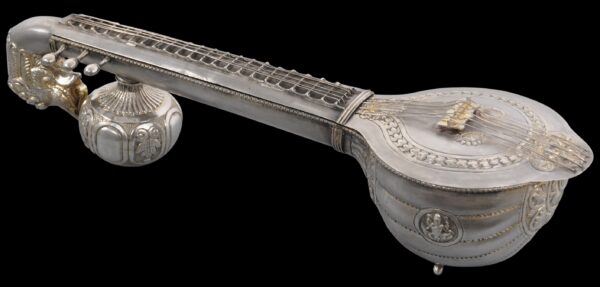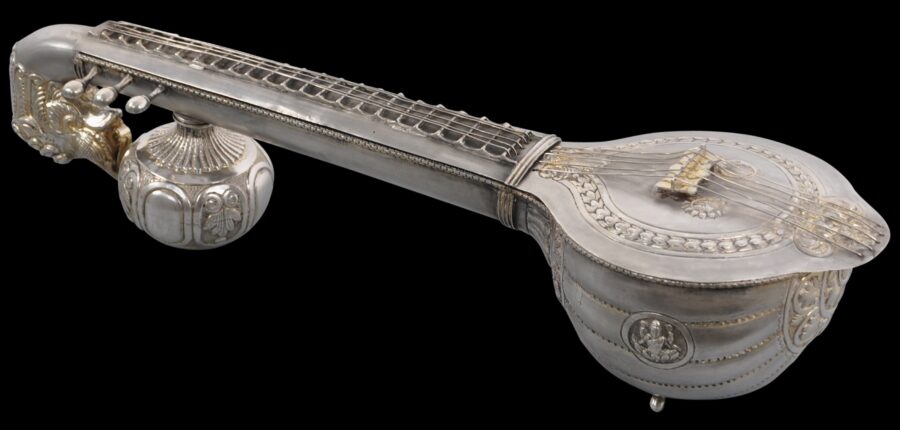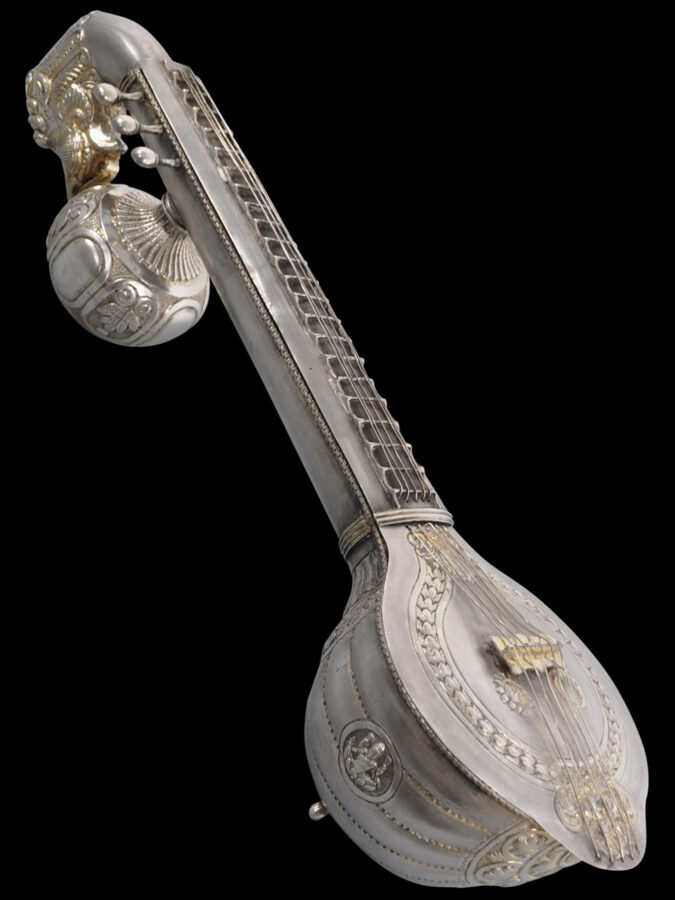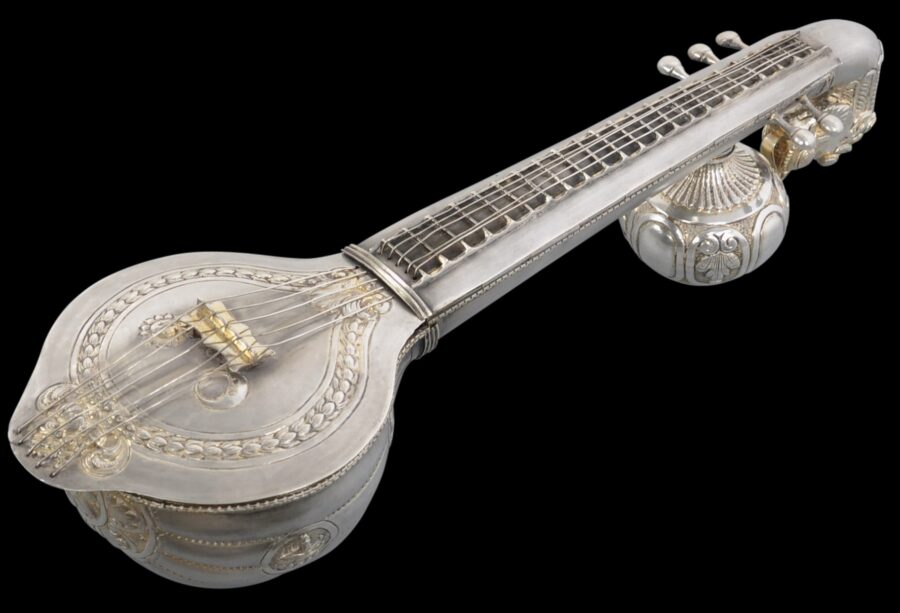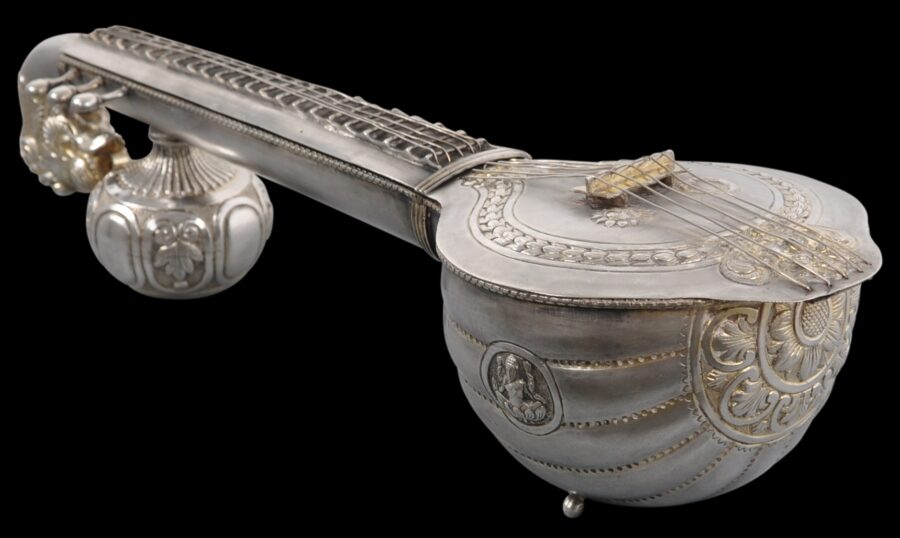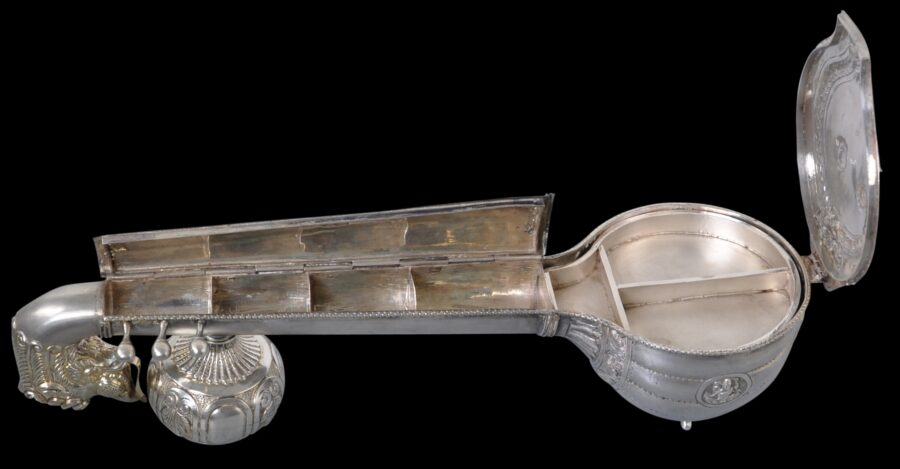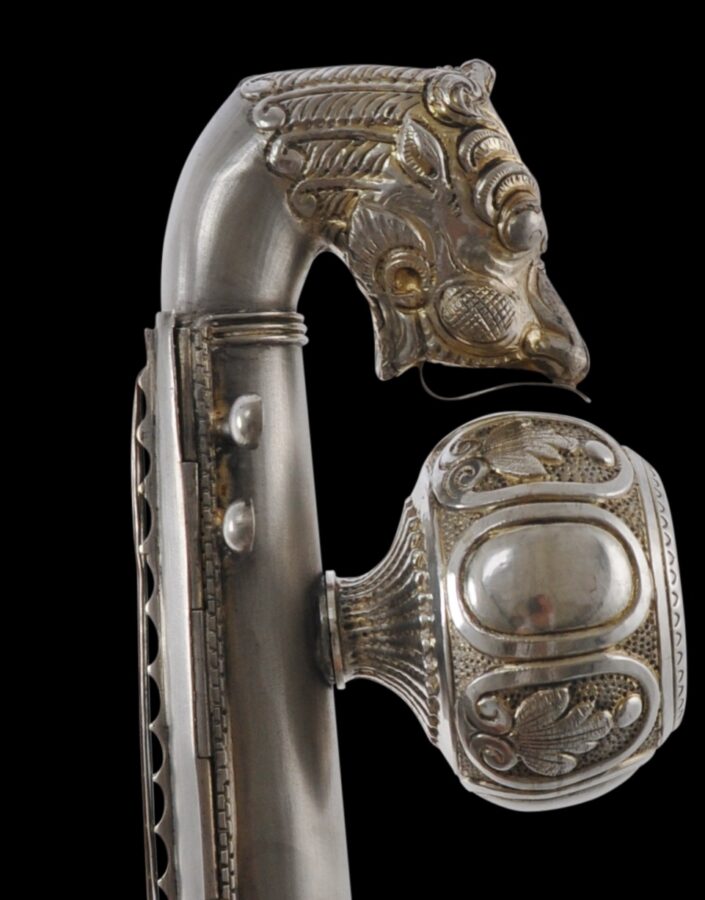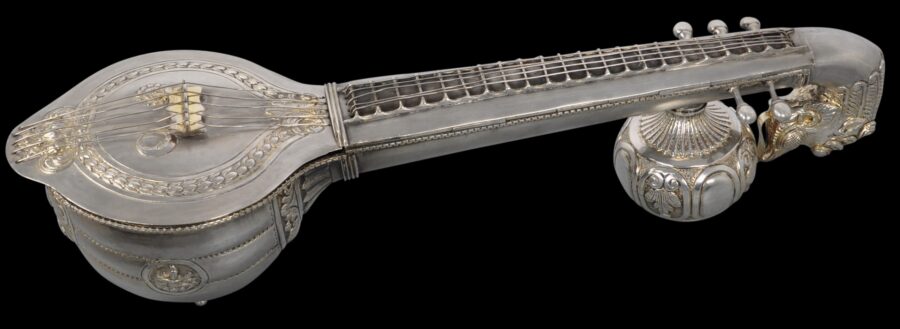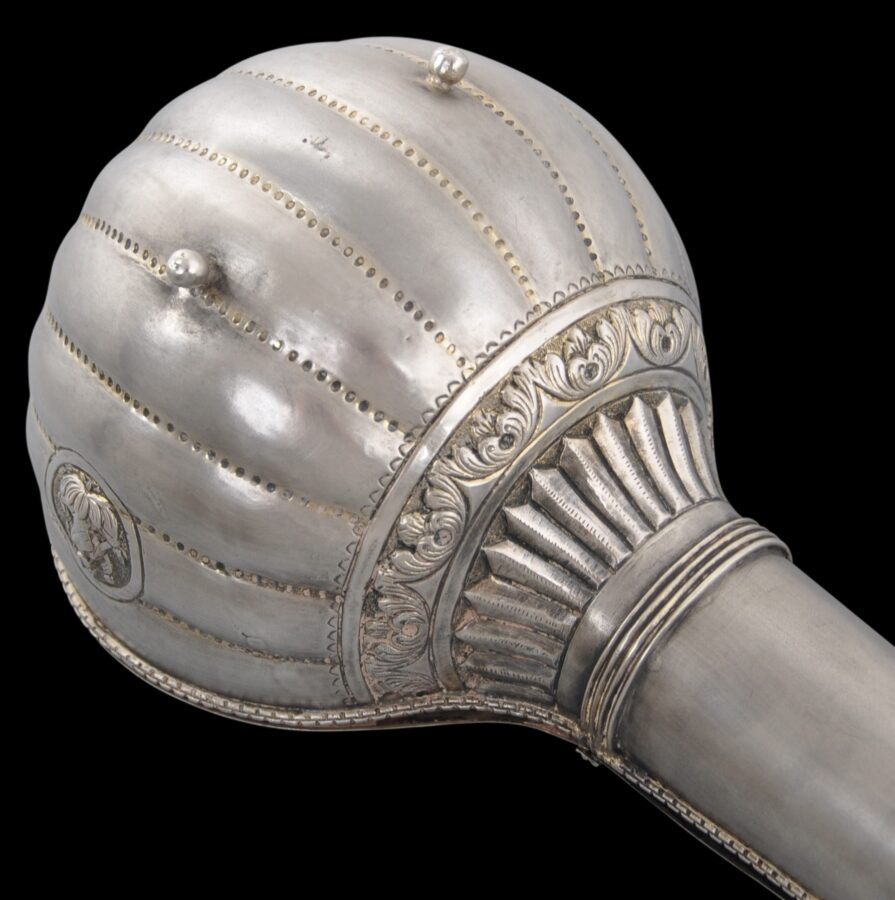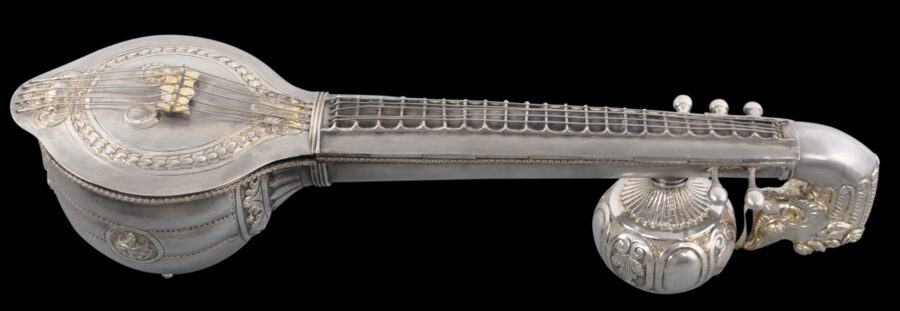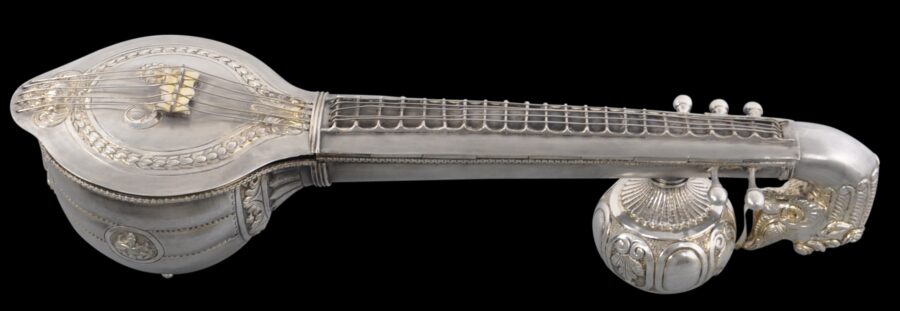This very unusual box for betel (paan) or spices is of high-grade silver that has been partly gilded (gold plated). It is shaped like the type of lute-like sitar used in Rajasthan.
All the detailing is of silver including silver strings (there are five), the five tuning pegs (kunti) and the flat bridge (jawari).
Traditionally the body (kaddu) of such a lute was made from a large, dried gourd attached to a wooden neck (dandi). The gourd-like nature of the body can be seen in the paan box here which has been gardrooned to emulate a gourd or pumpkin. The small spherical foot of the sitar known as the tumba is also like a melon or fruit.
The end or final has been fashioned as the head of a mythical yali creature.
The face of the body or kaddu is decorated with a protective kurtimukha mask as well as sun and moon motifs. The font end of the kaddu has been chased with an elaborate flower motif and the rest of the body has small roundels chased with a deity seated on lotus petals.
The face of the kaddu and the length of the neck open (the covers are hinged) to reveal internal compartments where the elements of the betel quid or spices were stored. The internal trays are all of silver.
Much of the surface of the box has been given a matt finish most probably by sand blasting, a technique that has been used for centuries to give such an effect.
The box is in excellent condition. We have not seen another.
References
Bruguiere, P, et al, Gloire des Princes: Louange des Dieux, Cite de la Musique, 2003.
Clark, M., Sounds of the Silk Road: Musical Instruments of Asia, MFA Publications, 2005.
Jasol, K. et al, Peacock in the Desert: The Royal Arts of Jodhpur, India, The Museum of Fine Arts, Houston, 2018.


